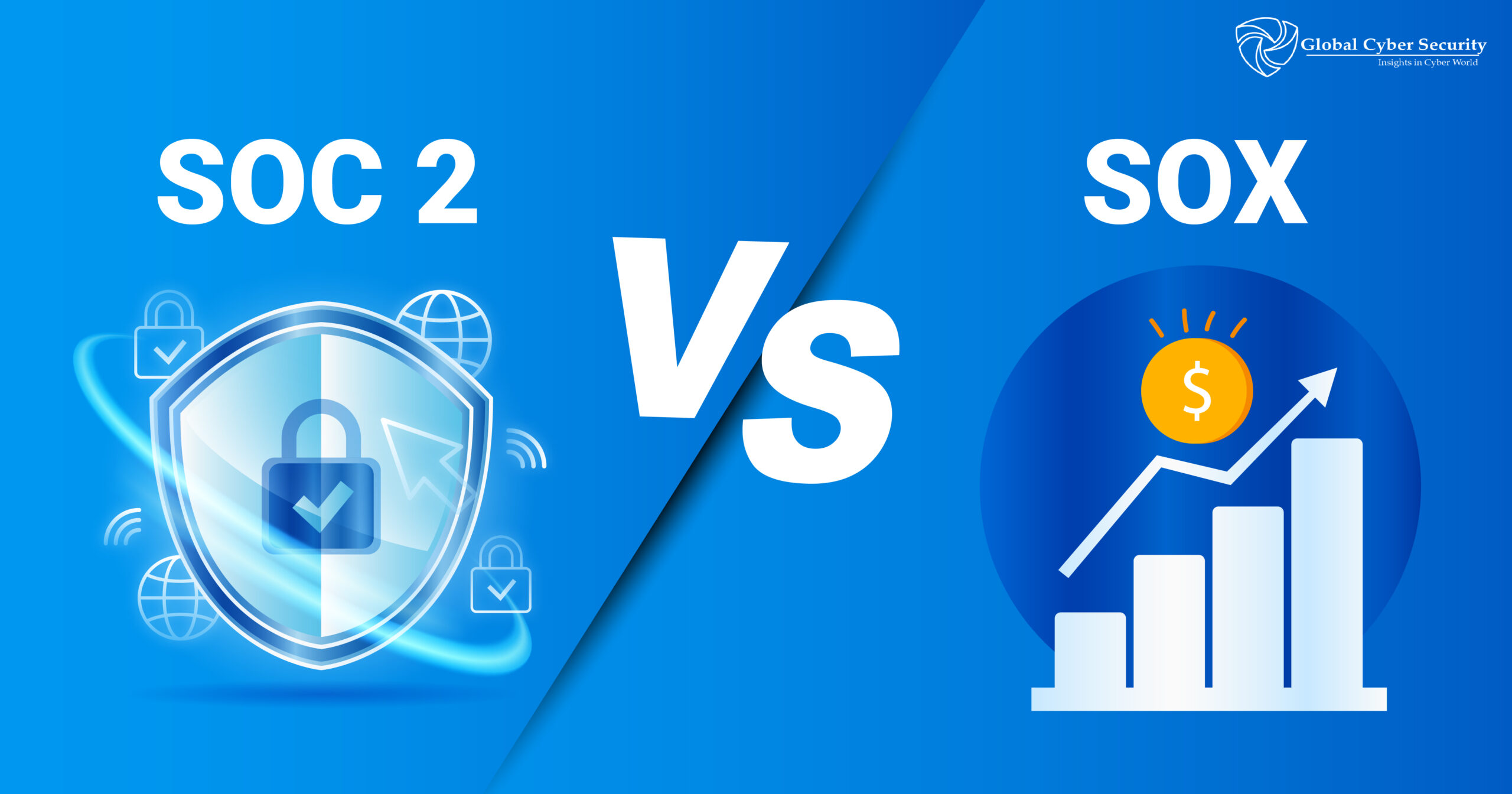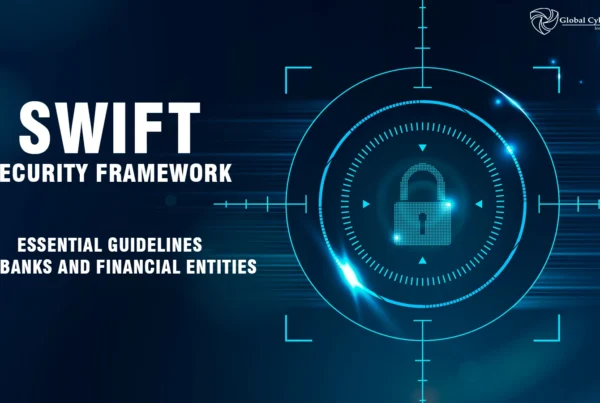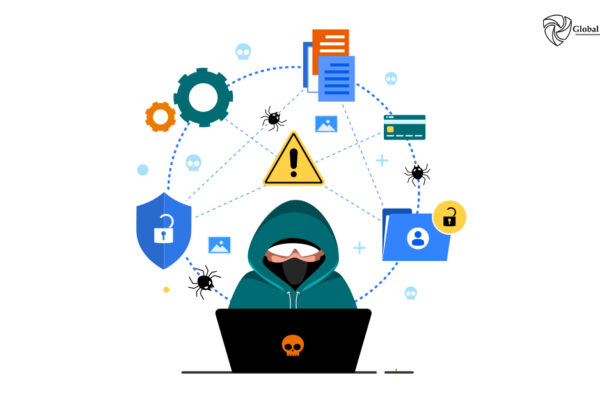
Understanding the Basics: What Are SOC 2 and SOX?
In today’s highly interconnected business environment, trust, security, and transparency are more important than ever. To safeguard stakeholders and uphold operational integrity, organizations must navigate a range of compliance frameworks. Among the most significant are SOC 2 and SOX—two well-known standards that, while both focused on assurance and accountability, serve different objectives and are applicable to different kinds of businesses.
SOC 2 (Service Organization Control 2) is a standard created by the American Institute of Certified Public Accountants (AICPA). It focuses on how companies handle and protect customer data, based on five key areas: Security, Availability, Processing Integrity, Confidentiality, and Privacy. A SOC 2 report shows that a company has strong internal systems in place to keep data safe. While it’s not legally required, many businesses—especially those in cloud services, SaaS, or IT—pursue SOC 2 compliance to prove they take data protection seriously and to build trust with their customers.
SOX (Sarbanes-Oxley Act of 2002) is a U.S. federal law created to prevent corporate fraud and protect investors after several major accounting scandals. Its main goal is to ensure that public companies report their financial information accurately and follow strong corporate governance practices. SOX requires companies to have clear internal controls over their financial reporting and to be transparent in their financial disclosures. Unlike SOC 2, SOX is legally mandatory for all publicly traded companies in the U.S., and failing to comply can lead to serious penalties. Although it’s a financial regulation, IT and cybersecurity teams often play a big role in meeting SOX requirements, as they help protect the systems and data used for financial reporting.
Key Differences Between SOC 2 and SOX Compliance
| Feature | SOC 2 (Service Organization Control 2) | SOX (Sarbanes-Oxley Act) |
| Primary Focus | Data Security & Privacy: How a service organization protects customer data and the integrity of its systems (Security, Availability, Processing Integrity, Confidentiality, Privacy). | Financial Reporting & Corporate Governance: Ensuring the accuracy and reliability of financial statements and preventing corporate fraud for public companies. |
| Applicability | Service Organizations: Primarily for companies that handle or process customer data (e.g., SaaS providers, cloud hosting, data centers, IT service providers). | Publicly Traded Companies: Mandatory for all U.S. public companies and their subsidiaries, plus their auditing firms. |
| Mandatory/Voluntary | Voluntary (but often contractually required): Not legally mandated, but frequently a business prerequisite to gain and retain clients. | Mandatory: A U.S. federal law with significant legal penalties for non-compliance. |
| Governing Body | American Institute of Certified Public Accountants (AICPA). | U.S. Congress (created the law), enforced by the Securities and Exchange Commission (SEC) and Public Company Accounting Oversight Board (PCAOB). |
| Key Principles/Sections | Based on five Trust Services Criteria (TSC): Security, Availability, Processing Integrity, Confidentiality, and Privacy. | Various sections, with key emphasis on Section 302 (CEO/CFO certification of financial reports) and Section 404 (management’s assessment of Internal Controls over Financial Reporting – ICFR). |
| Audience of Report | Current and prospective customers, business partners, and internal management. Reports are typically restricted. | Investors, the SEC, and the general public. Reports are publicly available as part of annual financial filings. |
| Nature of Audit | An attestation engagement performed by an independent CPA firm, evaluating the design and/or operating effectiveness of controls against the TSC over a period. | An audit of financial statements and an attestation to management’s assessment of ICFR by an independent external auditor. |
| Impact on IT | Directly influences IT security policies, operational procedures, data management, incident response, and system architecture to protect client data. | Significantly affects IT controls related to financial systems, data integrity, access management, change control, and audit trails to ensure accurate financial reporting. |
| Control Focus | Controls safeguarding data from unauthorized access, ensuring system uptime, processing accuracy, protecting confidential information, and managing privacy. | Controls ensuring accurate recording of financial transactions, proper segregation of duties, secure access to financial data, and reliable financial system operations. |
Which Compliance is Right for Your Business Type?
Choosing the right compliance framework depends on what your business does and how it’s structured legally.
SOX (Sarbanes-Oxley Act) is mainly required for publicly traded companies in the U.S. It’s a federal law aimed at ensuring accurate financial reporting and strong corporate governance to protect investors from fraud. If your company is listed on a U.S. stock exchange—or planning to go public through an IPO—SOX compliance is mandatory, and failing to meet its requirements can lead to serious legal and financial consequences.
In contrast, SOC 2 (Service Organization Control 2) is essential for service-based companies—like SaaS providers, cloud platforms, or any business that manages sensitive customer information. Although it’s not legally required, SOC 2 compliance is often a key expectation from clients and serves as strong proof of a company’s commitment to data security. It helps build trust and can provide a competitive advantage. In some cases, especially for publicly traded companies that also handle large volumes of customer data, both SOC 2 and SOX compliance may be necessary.
Technical vs. Financial Focus: A Clear Breakdown
The main difference between SOC 2 and SOX lies in their core focus areas: SOC 2 centers on technical and operational controls, while SOX is all about financial accuracy and reporting.
SOC 2: A Technically Driven Framework
SOC 2 emphasizes the technical side of data protection and system operations. Its goal is to evaluate how well a service provider safeguards customer data through secure and reliable systems. The audit closely examines:
- System Security: Tools and practices like firewalls, intrusion detection, access controls, and encryption.
- Availability: Disaster recovery plans, backup systems, and uptime monitoring.
- Processing Integrity: Ensuring data is processed accurately and reliably.
- Confidentiality: Safeguards like encryption, access limits, and secure disposal of sensitive data.
- Privacy: Handling of personal data in compliance with privacy standards.
SOC 2 audits heavily involve IT, security, and operations teams, and evidence includes system logs, security policies, incident reports, and technical configurations.
SOX: Financial Integrity at Its Core
In contrast, SOX (Sarbanes-Oxley Act) focuses on financial reporting accuracy and the internal controls that support it. While IT systems are part of the picture, they matter to SOX mainly in terms of how they help ensure trustworthy financial data. Key areas include:
- Internal Controls over Financial Reporting (ICFR): Designed to prevent or detect errors or fraud in financial statements.
- Financial Data Accuracy: Making sure all financial records are complete, timely, and accurate.
- Segregation of Duties: Preventing one person from controlling an entire financial process, reducing fraud risk.
- Fraud Detection: Systems and controls to identify and prevent manipulation or misreporting.
- Disclosure Transparency: Ensuring financial reporting is clear, complete, and timely.
SOC 2 vs SOX Audit Scope and Process: What to Expect
Understanding the audit scope and process for both SOC 2 and SOX is crucial for preparation and managing expectations. While both involve external auditors reviewing internal controls, their specific focus, evidence requirements, and typical timelines differ.
SOC 2 Audit Scope and Process: What to Expect
SOC 2 audits are highly customizable, based on your services and the Trust Services Criteria (TSC) relevant to your business.
- Mandatory: The Security criterion (Common Criteria) is always included.
- Optional: You and your auditor determine whether Availability, Processing Integrity, Confidentiality, and/or Privacy apply.
- Example: A SaaS company may include Privacy; a data center may focus on Availability.
- Defined Systems & Services: The scope includes specific systems, services, data flows, and locations.
- Third-Party Vendors: If you rely on subservice providers (like cloud hosts), their controls may need to be considered—often through their SOC 2 reports.
Type I vs. Type II
Type II: Assesses design and operational effectiveness over 3–12 months. Most businesses opt for this version for greater assurance.
Type I: Reviews control design at a specific point in time.
SOC 2 Audit Process
- Scoping & Readiness:
Work with a CPA firm to define scope and perform a gap analysis to identify weaknesses before the audit. - Documentation & Evidence Collection:
Prepare policies and gather evidence like system logs, access reviews, incident reports, and change management records. - Fieldwork (Testing):
Auditors perform:- Walkthroughs and interviews
- Observations and document reviews
- Re-performance of control activities
- Reporting:
The final report includes system descriptions, management’s assertion, auditor’s opinion, and test results. Reports are typically restricted to clients and stakeholders.
What to Expect
- Time: Prep can take months; audits typically span 3–12 months (Type II).
- Team Effort: Involves IT, security, HR, legal, and leadership.
- Evidence Heavy: Extensive documentation is required.
- Ongoing: Most companies undergo annual SOC 2 Type II audits to maintain trust and compliance.
SOX Audit Scope and Process: What to Expect
SOX Audit Scope
A SOX audit focuses on Internal Controls over Financial Reporting (ICFR)—controls that ensure financial data is accurate and reliable.
- Materiality: Audits focus on financial areas that could significantly impact the financial statements.
- Key Financial Processes: Includes revenue, expenses, payroll, inventory, treasury, and financial close.
- IT General Controls (ITGCs): Critical IT-related controls covering:
- Change Management
- Access Management
- System Operations
- System Development
- Entity-Level Controls (ELCs): Organization-wide controls like ethics, governance, and risk assessments.
SOX Audit Process
- Planning & Scoping:
Auditors and management define scope using materiality and risk, often guided by the COSO framework. - Control Documentation:
Management documents key controls using narratives, flowcharts, and control matrices. - Testing:
Auditors evaluate both design and effectiveness through observation, sampling, document review, and re-performance. - Deficiency Evaluation & Remediation:
Control weaknesses are classified and must be fixed before retesting. - Reporting:
Management and external auditors issue public reports on ICFR as part of the annual 10-K filing.
What to Expect
- Annual Requirement for public companies.
- Public Disclosure of material weaknesses can affect stock price and investor trust.
- Extensive Documentation and coordination across finance, IT, audit, and executive teams.
- Often part of an integrated audit with financial statement review.
Can Your Company Need Both SOC 2 and SOX?
Yes, a company absolutely can and often does need both SOC 2 and SOX compliance. While they address different aspects of a business, their requirements can overlap, particularly in the realm of IT controls.
Many companies—especially those that are publicly traded and also provide services—often need to comply with both SOC 2 and SOX.
- SOX is a legal requirement for U.S. public companies, ensuring accurate financial reporting and investor protection.
- SOC 2 is essential for service providers (like SaaS, cloud, or IT companies) to assure clients that data is handled securely.
Why Both?
- Different Focus:
- SOX covers financial integrity and related IT controls.
- SOC 2 addresses broader data protection areas—security, availability, confidentiality, etc.
- Overlapping Controls:
Controls like access management and change control often support both frameworks, enabling efficiency in compliance efforts. - Different Audiences:
- SOX satisfies regulators and investors.
- SOC 2 builds trust with customers and partners.
How to Choose the Right Framework for Your Growth Stage
Choosing the right compliance framework hinges on your business’s growth stage: early-stage startups should prioritize basic security hygiene and avoid complex frameworks. As a company enters its growth phase and aims for larger clients, SOC 2 Type 1 (followed by Type 2) becomes crucial for building trust and unlocking enterprise deals by demonstrating strong data security. Finally, for mature companies eyeing an IPO, SOX readiness becomes a critical, legally mandated undertaking, often starting 18-24 months prior, to ensure financial reporting accuracy and corporate governance for public markets, while still maintaining SOC 2 for client assurance.



